"Play by the rules, Doctor, or the game is nothing." —John Steed
With every successive release, games insist on impressing us with ever more outlandish premises, garish visuals or overwrought mechanics. It's a natural result of the gaming field growing more crowded and competitive... But every now and again a game comes along which is so unpretentious, so simple in its aim and so well executed one cannot help but be impressed. The Temple of Elemental Evil is one such game.
It is almost one such game.
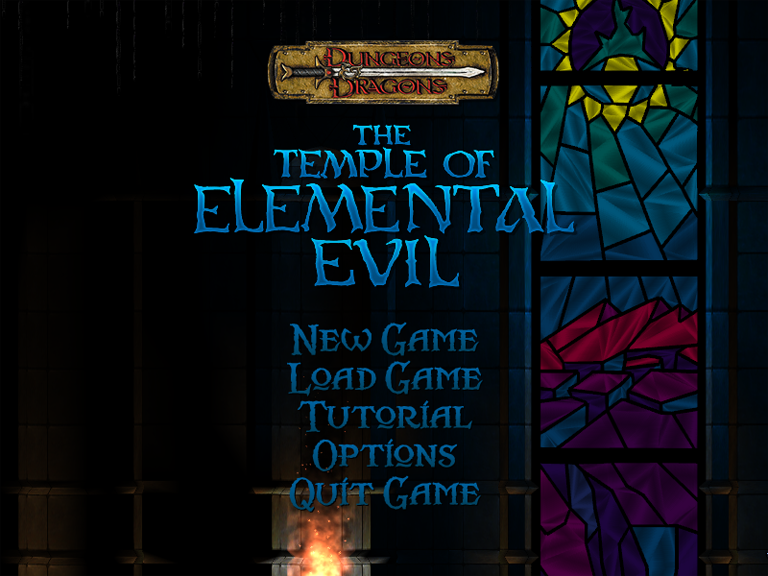
Developed by Troika in 2003 (and yet, because of its smaller team and budget, feeling like a precursor of Neverwinter Nights, released a year earlier), ToEE had a very basic aim: to faithfully recreate a 1985 D&D module set in the world of Greyhawk and accurately implement the 3.5 ruleset. And, where those aims are concerned, it succeeded beautifully.
Running a (quite pretty) modified version of the isometric engine used in Arcanum (Troika's previous release), the game sees the player form a party of up to five characters to put an end to a great evil secreted away in the massive, titular temple, which has been gathering strength since it was sealed away following a great battle (which you get to glimpse in the opening animation).
While the main focus of ToEE is turn-based combat, the game is not as single-minded about it as, say, Icewind Dale with all the staples of 3.5 D&D putting in at least a token (if persistent) appearance.
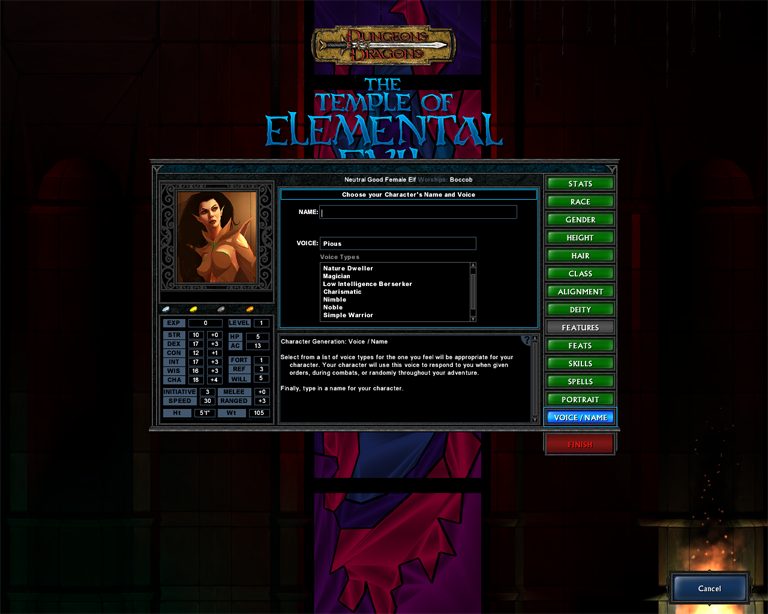
To wit, while dialogue is limited, it implements skill checks for bluff, diplomacy and intimidation, providing alternate quest solutions for your party should they excel in the appropriate skills. A handful of quests are available (mostly in the hubs of Hommlet and Nulb) that do not require combat and can be resolved via skill checks or fetching the appropriate item. Certain quests can also earn you a reputation, making town citizens see you in a better (or worse) light; and underhanded, or downright evil, solutions are as viable as those of a more purehearted nature.
Item variety is expanded from what you'd expect in a "basic" D&D experience to include obscure weapons (ever see a ranseur in a PC D&D title? how about a cleaver or a spiked chain?); feats allow the enhancement of items such as weapons, armor and jewelry (boosting damage and stats or adding additional modifiers); and interactions with NPCs can lead to anything from picking up an extra party member to getting hitched. In short, on the Eye of the Beholder (exclusively combat) to Planescape: Torment (mostly dialogue) scale, ToEE falls somehwere slightly shy of the middle: still combat-oriented, for the most part, but with a surprising amount of variety included.
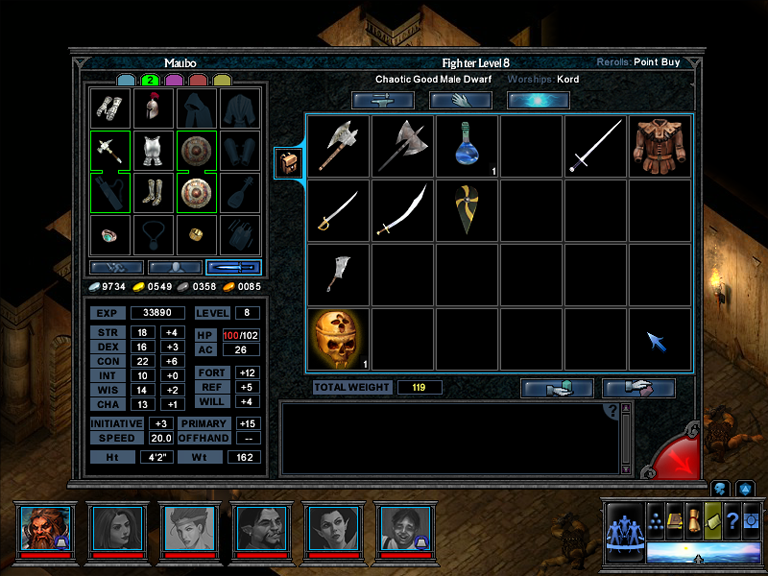
Speaking of combat, for better or worse it painstakingly follows the D&D 3.5 ruleset, crossing every Iuz and dotting even The Littlest Troll... Because of its strict adherence to the rules (coupled with the fact the entire party is composed of laughably meek level one characters), ToEE combat can be a bit harsh at the outset with limited options and every roll spelling the difference between dodging death and having to reload an earlier save.
Troika's decision to implement a "smooth" movement system (where you set the distance a character moves, but the game calculates pathing) and a lack of occlusion options (meaning, sometimes, a thing you want to click on is behind something else); further complicate the already unforgiving combat leading to, oftentimes, frustrating scenarios — but said frustration is like a wall you have to scale to fully appreciate the ToEE experience. Persevere to, say, level four or so and combat starts becoming a more balanced, tactical and fulfilling experience you'll actually start to look forward to (until you mistake an Ogre Chieftain for a mere Ogre or run headlong into a room housing, seemingly, the Regional Bugbear Convention).
Although combat remains challenging throughout, it is at least fair and, once you have grasped the ins and outs of the rules, instances of Random Bad Outcomes diminish drastically.
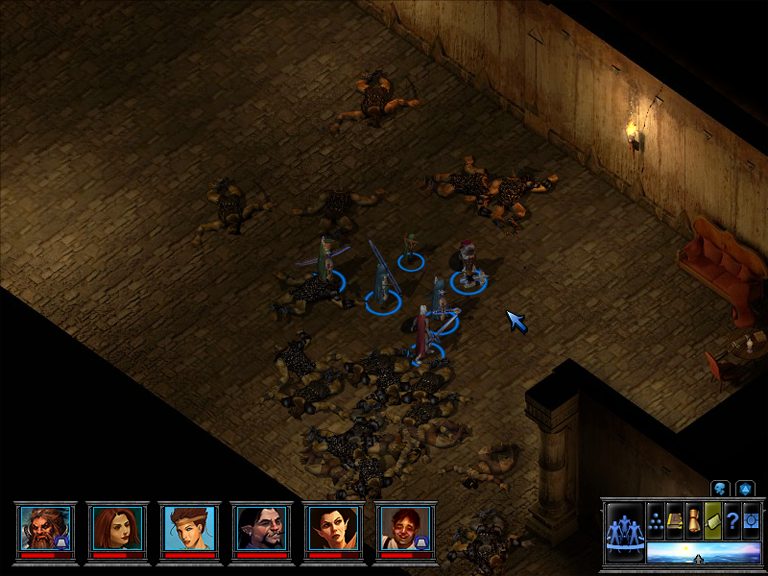
Fun though it is, ToEE is not without its issues.
On release, it was riddled with bugs and – 21 years later – the most persistent of these still rear their antennaed little heads. In 40 hours and change of playing, I've had the game consistently lose track of party members (you click on where you want the party to go, one of them gets stuck on the way and the game just leaves them there); hilariously struggle with the use of identification scrolls, fail to select the whole party when the "select the whole party" UI button is pressed and, on several occasions, simply freeze or CTD (not often enough to be outrageous, but — still)...
The map design is also outdated and needlessly sprawling, turning simple fetch quests around town into minutes-long slogs where you might as well have a podcast handy until your poor sprites jog the distance between destinations. For as little as the maps include, in terms of Things To Do, the distances between points of interest are mind-bogglingly vast.
Lastly, NPC companions are coded to automatically collect their agreed-upon share of the loot every time you click on a defeated opponent or chest (which is fine); but also do not allow you to take items out of their inventory or sell their belongings, which can quickly encumber them and force you to make frequent (unnecessary) trips back to town (except for Elmo: for the Hommlet town drunkard, Elmo is surprisingly easy to get along with — and handy with an axe).
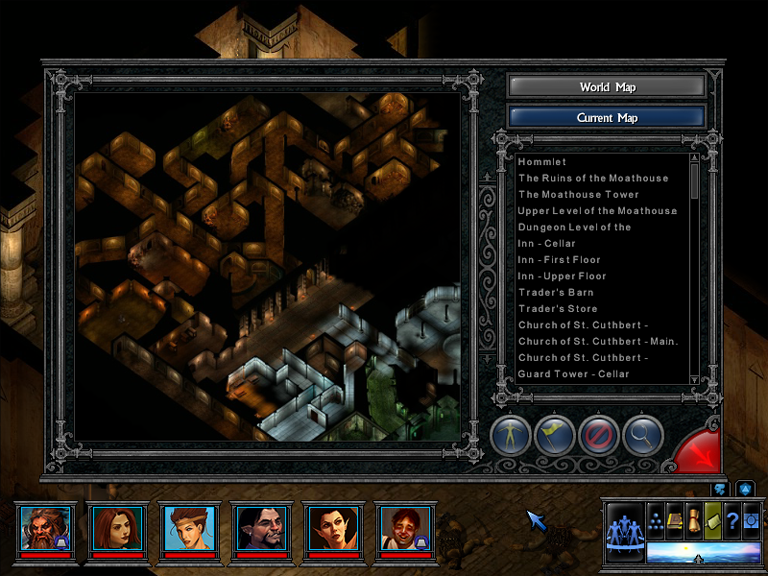
But despite these shortcomings, The Temple of Elemental Evil has enough innate charm to keep you entertained for its about 50-hour duration. It might not be the most ambitious D&D adaptation around, but it accomplishes what it set out to do in fine form.
If you like your D&D games rule-heavy, miss the simpler days where dungeon crawling was more concerned with exploration and combat than plot or simply want to play a straightforward adaptation of a classic PnP module, The Temple of Elemental Evil is the game for you. It might not be as polished as other games and its bugs and steep initial difficulty pose unlooked-for bugbears, but – where adherence to the source material is concerned – it remains "the most faithful representation of ... tabletop role-playing game ... rules in a video game" which also happens to be pretty entertaining.
Pig (Does Not) Recommend
- -installing the Circle of Eight mod for ToEE; in my brief tryout of it, I was treated to degraded, choppy performance, frequent freezes and crashes and my first BSOD in about, oh, a decade or so; as admirable as it reads, what with bugfixes, an increased level cap and numerous quality of life improvements, the mod isn't stable at all and seems to cause more problems than it fixes;
